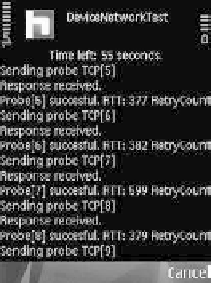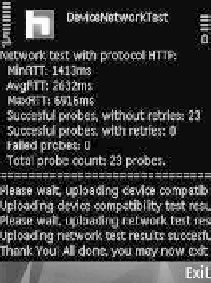Java Reference
In-Depth Information
Figure B.3
Device and Network Test in action
To read more information about the configuration options for the test
tool and how to interpret its results, check the SNAPMobile:Deviceand
Network Test Instructions document, available from the Forum Nokia
website.
B.5.2 SNAP Mobile SDK Emulation Environment
The Emulation Environment is a local development environment and
testing tool. In addition to simulating a connection to a remote SNAP
Mobile server, it includes debugging features and supports precompliance
testing of the game. This version provides a graphical user interface and is
highly configurable. You can set up users and game class IDs, and match
lobby, presence, and other attributes to your game.
You can use the live development server (to which access is provided
by Forum Nokia) during the development phase in addition to working
with the Emulation Environment. Table B.1 lists the main feature differ-
ences between the remote live development server and the Emulation
Environment.
Figure B.4 shows the Emulation Environment Configuration tab with a
default HTTP port (8080) and TCP port (8976) for SNAP Mobile games.
You can change the port settings if you are using other port numbers for
your game or if you need to change them to match open ports in your
firewall. The Configuration tab includes the game class ID (GCID) settings
for SNAP Mobile sample games (for example, a GCID of 49721 for the
MazeRacer
sample). Each game configured on the SNAP Mobile server
or the Emulation Environment has a unique GCID number, which is used
for identification.
The Configuration tab also includes several user account configurations
(
test1/test
through
test10/test
). You can use the text fields in
this tab to modify, save, and delete game settings and to add new ones.
For example, you can add and configure a new GCID and game, and



